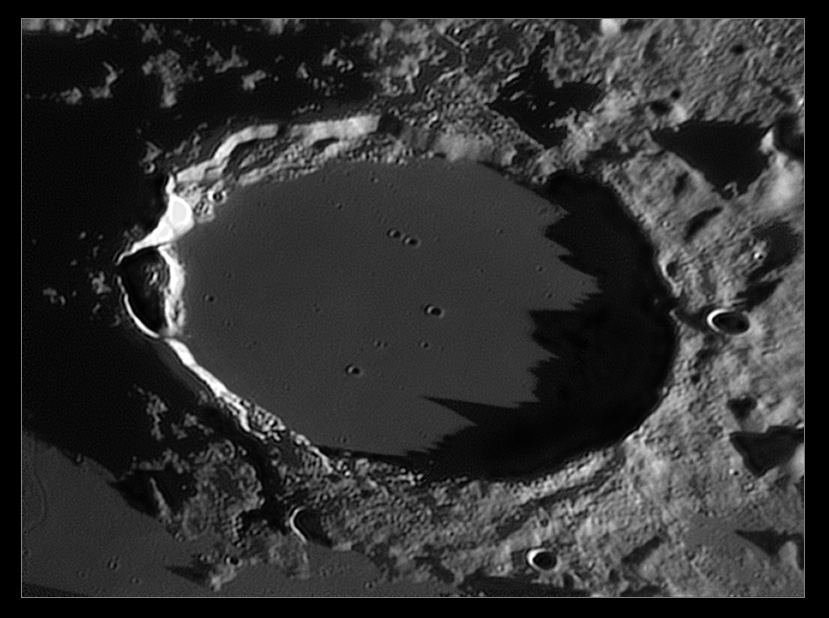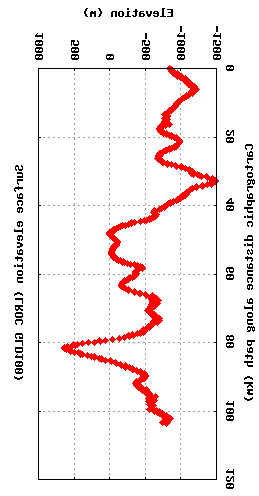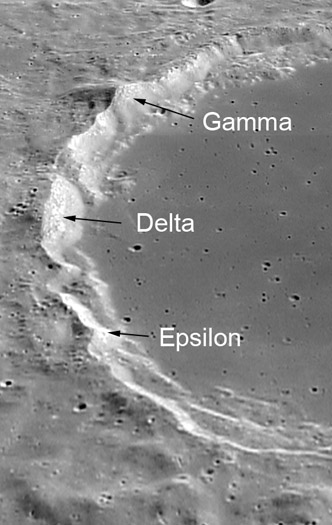Difference between revisions of "July 9, 2012"
| Line 2: | Line 2: | ||
=Why Does Plato Gamma Exist?= | =Why Does Plato Gamma Exist?= | ||
<!-- ws:start:WikiTextHeadingRule:0:<h1> --> | <!-- ws:start:WikiTextHeadingRule:0:<h1> --> | ||
| − | [[File:Plato_2012_03_01_1916ut.jpg|plato_2012_03_01_1916ut.jpg]] | + | [[File:Plato_2012_03_01_1916ut.jpg|plato_2012_03_01_1916ut.jpg]]<br /> |
[[File:LPOD-Jul9b-12.jpg|LPOD-Jul9b-12.jpg]] | [[File:LPOD-Jul9b-12.jpg|LPOD-Jul9b-12.jpg]] | ||
[[File:LPOD-Jul9c-12.jpg|LPOD-Jul9c-12.jpg]] | [[File:LPOD-Jul9c-12.jpg|LPOD-Jul9c-12.jpg]] | ||
Revision as of 13:47, 7 February 2015
Why Does Plato Gamma Exist?



left image by Damian Peach, Selsey, UK; topo profile from LRO QuickMap (NASA/Arizona State University), and south up Kaguya HDTV image from Shirao & Wood (2011)
For a crater with a continuous rim Plato has great irregularities in rim height. Damian's dramatic image shows two broad areas of height on the northeast (Plato Epsilon) and east (Delta) sides of the eastern rim, and the controversial tapered peak in the southeast (Gamma). Using the LRO Path tool it is possible to investigate the profiles and elevations of these irregularities by measuring along the the rim crest (red line). Starting at the top (Plato Epsilon) there is a two-humped mountain that rises 525 m above the nearby rim crest to the north and 800 m above a low rim area to the south. Plato Delta is a higher two-humper, rising 1500 m above the low spot. Plato Gamma's shadow and profile show that it is a single peak - about 1500 m taller than nearby rim crests - rather than a general elevated area. An oblique view from Kaguya shows Gamma's unique character (image with peaks identified). The Kaguya image also shows layering in the rim, with the top third or quarter being mottled material with large bright masses; the unit below is a uniform gray. I suspect that the gray rocks are the original, but uplifted, crater edge, and the mottled unit is fallback ejecta, material excavated from below the crater and deposited on top of the uplifted rim. The bright blobs may be giant blocks of anorthosite. Gamma may simply be where a massive clump of ejecta landed - this seems to be the case for Delta and Epsilon too. This examination of Plato's eastern rim shows the value of combining different data sets. The oblique view from Kaguya provides evidence of structure and different units. The LRO topo quantifies the variations in rim height, and Damian's magnificent telescopic view initiated the entire investigation by making it clear that Gamma was an unusual peak. Now we know why.
Chuck Wood
Tomorrow: The real story of Plato Zeta
Technical Details
2012 03 01 1916 UT. 356mm reflector. PGR Flea3.
Related Links
Rükl plate 3
Damian's 2012 lunar images gallery
Yesterday's LPOD: Sharper Still
Tomorrow's LPOD: Home Again Zeta



